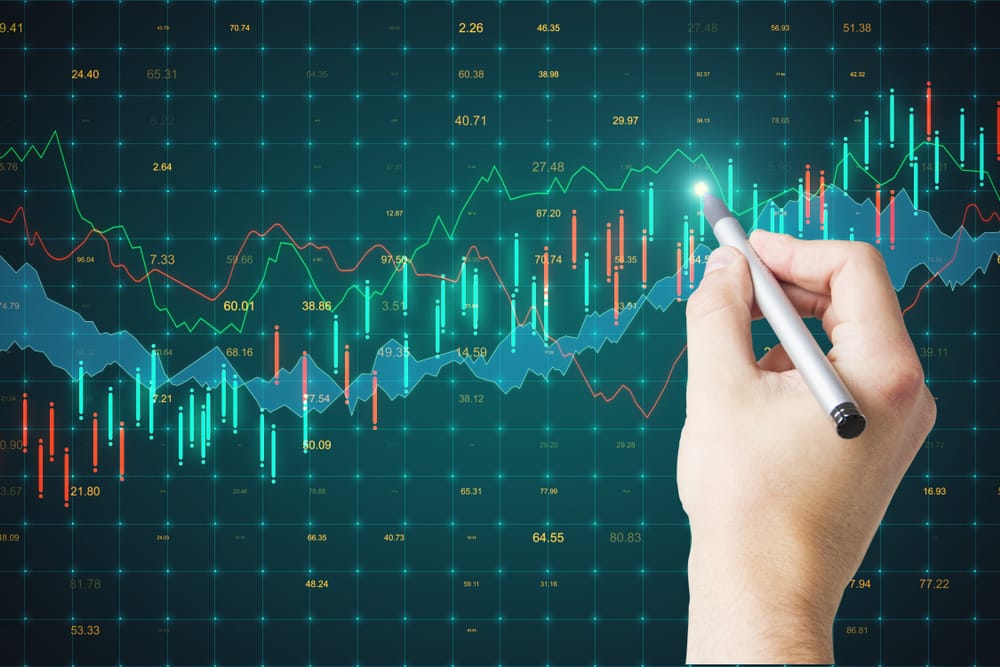Global price of Energy index
This dataset tracks global price of energy index over time.
Latest Value
166.79
Year-over-Year Change
-10.35%
Date Range
1/1/1992 - 6/1/2025
Summary
The Global price of Energy index measures the average international price of major energy commodities. It is a key indicator for monitoring global energy market trends and price movements.
Analysis & Context
This economic indicator provides valuable insights into current market conditions and economic trends. The data is updated regularly by the Federal Reserve and represents one of the most reliable sources for economic analysis.
Understanding this metric helps economists, policymakers, and investors make informed decisions about economic conditions and future trends. The interactive chart above allows you to explore historical patterns and identify key trends over time.
About This Dataset
The Global price of Energy index is a composite index that tracks the average international price of a basket of major energy commodities, including crude oil, natural gas, coal, and electricity. It provides a broad overview of global energy price dynamics and is widely used by economists, policymakers, and market analysts.
Methodology
The index is calculated by the International Monetary Fund using a weighted average of global spot prices for the included energy products.
Historical Context
Fluctuations in the Global price of Energy index have significant implications for inflation, consumer spending, business costs, and the broader economy.
Key Facts
- The index has a base year of 2016.
- Energy accounts for around 10% of global consumer spending.
- Crude oil is the most heavily weighted component in the index.
FAQs
Q: What does this economic trend measure?
A: The Global price of Energy index measures the average international price of major energy commodities, including crude oil, natural gas, coal, and electricity.
Q: Why is this trend relevant for users or analysts?
A: Fluctuations in global energy prices have significant implications for inflation, consumer spending, business costs, and the broader economy, making this index a key indicator for economists and policymakers.
Q: How is this data collected or calculated?
A: The index is calculated by the International Monetary Fund using a weighted average of global spot prices for the included energy products.
Q: How is this trend used in economic policy?
A: The Global price of Energy index is widely used by economists, policymakers, and market analysts to monitor global energy market trends and price movements, which have significant implications for inflation, consumer spending, and broader economic conditions.
Q: Are there update delays or limitations?
A: The index is published monthly with a typical update delay of 1-2 months. As a composite index, it may not capture all regional or product-specific energy price variations.
Related News

US economic growth slows amid rising inflation concerns
US Economic Growth Slows Amid Inflation and Rising Interest Rates The US economy, a crucial indicator of its global standing, is facing a slow growth trajectory. Recent data suggest that inflationary pressures and rising interest rates are the chief culprits in this deceleration. With the Consumer Price Index reflecting heightened inflation and the Federal Reserve adjusting interest rates, the interplay of these factors raises significant concerns for economic stability. These developments furt

U.S. Natural Gas Storage Increases Due to Market Dynamics
Navigating Market Volatility: U.S. Natural Gas Storage Strategies and Trends Understanding the dynamics of the U.S. natural gas storage sector is crucial as it plays a central role in shaping the energy market. The storage of natural gas is not just about logistics; it represents a strategic resource ensuring energy availability and stability in times of fluctuating supply and demand. Market volatility affects the price and availability of natural gas, and by extension, decisions regarding its

U.S. Stocks Hit Records; Gold Surges, Bitcoin Declines
U.S. Stock Market Soars Amid Treasury Yield Concerns Despite ongoing global uncertainties, the U.S. stock market has defied expectations, setting unprecedented records this year. The surge of the stock indices reflects the market's buoyancy despite economic fluctuations. Major indicators like the Dow Jones, S&P 500, and Nasdaq have all reached new highs, signifying the resilience of equities in the current financial landscape. Meanwhile, gold prices have surged, reinforcing its status as a safe

U.S. Natural Gas Prices Rise Due to Warmer Weather Forecasts
U.S. Natural Gas Prices Surge: Economic and Weather Patterns at Play The current surge in U.S. natural gas prices is reshaping the energy market landscape. Recent weather forecasts, combined with robust economic patterns, are pushing these prices skyward, affecting individuals and industries alike. This uptrend intertwines with broader energy market dynamics, such as climate patterns and economic impacts. Understanding these interconnected factors helps explain the increasingly volatile natural

S&P 500 hits record as U.S. producer prices fall
S&P 500 Reaches Record High as U.S. Producer Prices Decline The S&P 500 reaching a record high suggests a notable moment in market history, particularly as the U.S. Producer Price Index (PPI) shows a downward trend. The link between the stock markets and producer prices demonstrates how interconnected these financial indicators can be. Falling PPI numbers might seem positive, yet they can signal underlying market changes. These shifts invite investors to recalibrate their approaches in response

US Fed rate cut depends on upcoming CPI inflation report
How the CPI Inflation Report Could Shape the Next Fed Rate Cut Decision The Consumer Price Index (CPI) inflation report plays a vital role in shaping U.S. economic policy, particularly concerning the Federal Reserve's decisions. As the primary measure of inflation for urban consumers, understanding CPI figures can steer expectations about potential rate cuts. This report influences a host of financial metrics including interest rates, US inflation, and the overall health of financial markets. A
Related Trends
Consumer Price Index for All Urban Consumers: All Items in U.S. City Average
CPIAUCNS
Capacity Utilization: Total Index
TCU
Commercial and Industrial Loans, All Commercial Banks
TOTCI
Share of Foreign Born in Home Owners Loan Corporation (HOLC) Neighborhood A
RLMSHFBHOLCNA
Home Ownership Rate in Home Owners Loan Corporation (HOLC) Neighborhood C
RLMSHHORHOLCNC
Share of Foreign Born in Home Owners Loan Corporation (HOLC) Neighborhood C
RLMSHFBHOLCNC
Citation
U.S. Federal Reserve, Global price of Energy index (PNRGINDEXM), retrieved from FRED.